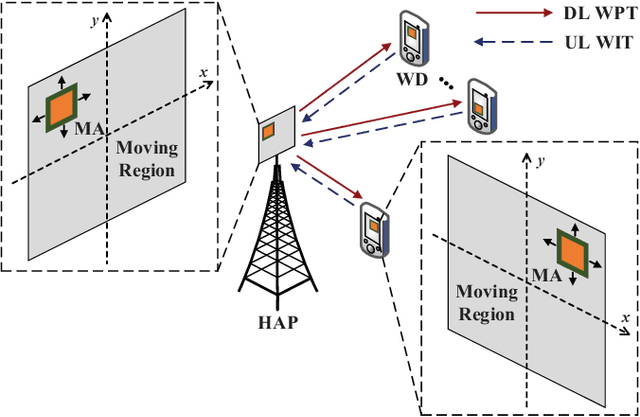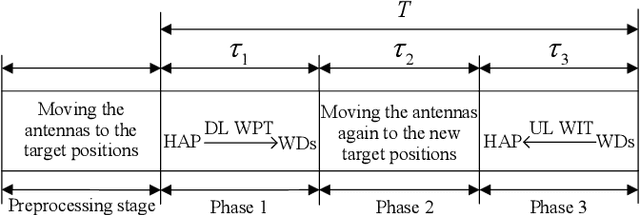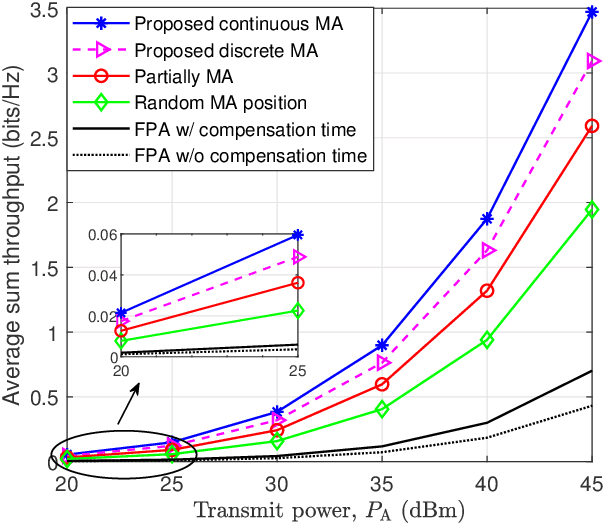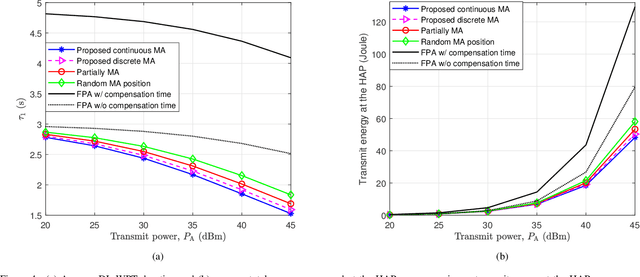Movable Antennas Enabled Wireless-Powered NOMA: Continuous and Discrete Positioning Designs
Paper and Code
Sep 30, 2024



This paper investigates a movable antenna (MA)-enabled wireless-powered communication network (WPCN), where multiple wireless devices (WDs) first harvest energy from the downlink (DL) signal broadcast by a hybrid access point (HAP) and then transmit information in the uplink (UL) using non-orthogonal multiple access. Unlike conventional WPCNs with fixed-position antennas (FPAs), this MA-enabled WPCN allows the MAs at the HAP and the WDs to adjust their positions twice: once before DL wireless power transfer and once before DL wireless information transmission. Our goal is to maximize the system sum throughput by jointly optimizing the MA positions, the time allocation, and the UL power allocation. Considering the characteristics of antenna movement, we explore both continuous and discrete positioning designs, which, after formulation, are found to be non-convex optimization problems. Before tackling these problems, we rigorously prove that using identical MA positions for both DL and UL is the optimal strategy in both scenarios, thereby greatly simplifying the problems and enabling easier practical implementation of the system. We then propose alternating optimization-based algorithms for the resulting simplified problems. Simulation results show that: 1) the proposed continuous MA scheme can enhance the sum throughput by up to 395.71% compared to the benchmark with FPAs, even when additional compensation transmission time is provided to the latter; 2) a step size of one-quarter wavelength for the MA motion driver is generally sufficient for the proposed discrete MA scheme to achieve over 80% of the sum throughput performance of the continuous MA scheme; 3) when each moving region is large enough to include multiple optimal positions for the continuous MA scheme, the discrete MA scheme can achieve comparable sum throughput without requiring an excessively small step size.
 Add to Chrome
Add to Chrome Add to Firefox
Add to Firefox Add to Edge
Add to Edge